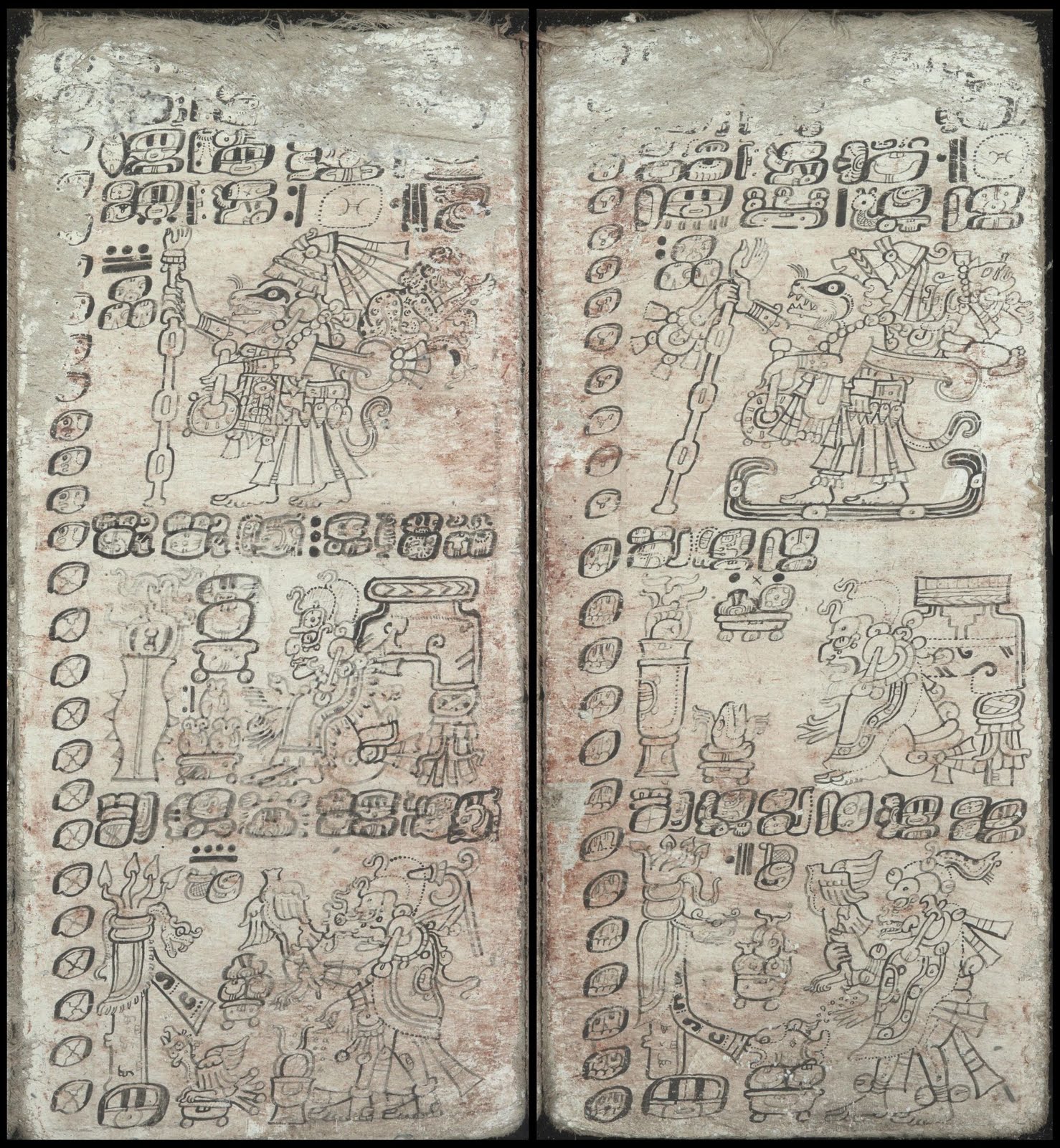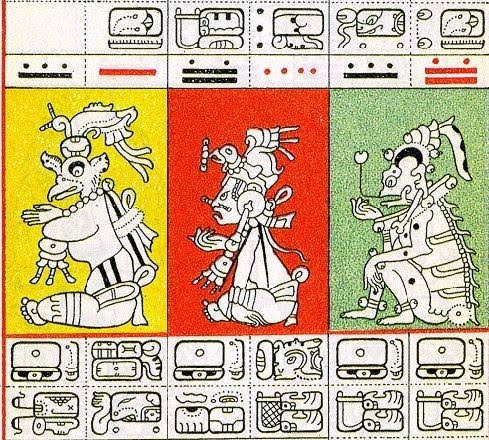The Dresden Codex
"The height of Maya civilization in what are now parts of Central America and Mexico’s Yucatán Peninsula lasted for most of the first millennium CE, and elements of Maya culture survived until the arrival of Europeans in the early sixteenth century.The Dresden Codex (named for the city where it is housed) is a fig bark paper manuscript in concertina style, produced around the beginning of the 13th century (a contentious point). The seventy-four pages are sewn together producing an eleven foot long document which was originally folded up between protective wooden covers bearing engraved jaguars. As the most complete of the few remaining Maya manuscripts, it is a comprehensive source for Maya calendar and astronomy systems and an aid to glyph interpretation in the wider iconography of the Maya culture.
Among the greatest accomplishments of the Maya was the development of highly sophisticated mathematical and astronomical systems, both of which played an important role in their religious beliefs and practices." [source]
"The Dresden Codex was written by eight different scribes using both sides. They all had their own particular writing style, glyphs and subject matter. [..] Its images were painted with extraordinary clarity using very fine brushes. The basic colors used from vegetable dyes for the codex were red, black and the so-called Mayan blue." [source]

Introduction - Invocation of the gods; preparation of prophecies
&
The Grand Deluge
&
The Grand Deluge


Tables for the Planet Mars

Serpent numbers; the columns of the universe; manifestations of the Rain God

Rituals at the beginning of the New Year

Food offerings to the Rain God

Food offerings to the Rain God

Food offerings to the Rain God

Eclipse tables

The Moon Goddess; illness and birth
The Dresden codex is believed to be a copy of an original text that was composed between about 700 to 900 AD, prompting some historians to assert that it's the earliest known book from the Americas. The surviving copy may have been one of a number of pre-Columbian works sent to Europe by Hernán Cortés in 1519. It first surfaces in recorded history in 1739 when it was purchased from a private collection in Vienna by the (then) Royal Library of Dresden (now: Sächsische Landesbibliothek).
The manuscript has been published in various facsimile and reproduction formats beginning with Alexander von Humboldt's inclusion of a few codex pages in one of his books in the early 1800s. During the bombing of Dresden in WW2 the manuscript suffered water damage but it has since been restored. Although a couple of versions of the Dresden Codex have been online for some time, they are - as far as I can tell - interpretive reproductions or doctored photographic facsimiles and the image quality varies. So it's good to see that the Dresden Library last month uploaded (fairly) high resolution unaltered images of all the pages from the codex.
- Codex Dresden [Mscr.Dresd.R.310] can be accessed from Sächsische Landesbibliothek in Dresden (click on the book icon)
- FAMSI have two other versions of the codex (click through the thumbnails to see the facsimile and reproduction images) (or as downloadable pdfs)
- Maya Codices at the New World Encylopedia.
- Background articles (in German) from Sächsische Landesbibliothek.
- The Dresden Codex Eclipse Table by MJ Finley.
- Mayan Mathematics (University of St Andrews, Scotland).
- The Dresden Codex Lunar Series and Sidereal Astronomy by James Q. Jacobs.
- Mesoweb has a lot of pdf articles available, although I haven't read any (search on 'Dresden', for instance)
- Codex Dresdensis is a 20 minute documentary available on Vimeo, partly in Spanish and partly in German (no subtitles I'm afraid).
- Previously on BibliOdyssey: MesoAmerica.
- [The image captions above are translations from the Dresden Library site]
The dual-page and detail images below are from the 1933 Gates reproduction (of variable accuracy, so it is said) of the Dresden Codex. They came from a large MesoAmerican manuscript BitTorrent file downloaded ages ago (thanks Tia!) but I'm fairly certain they are actually extracted/compiled from the FAMSI site, as noted above.























